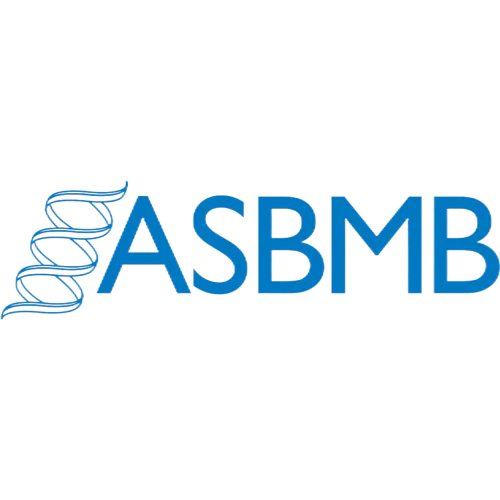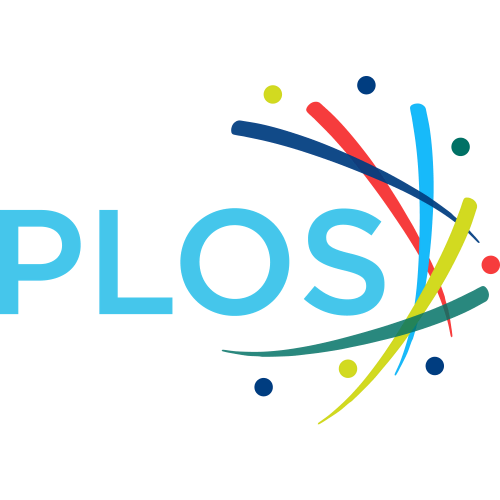Open Access


Proceedings of the National Academy of Sciences of the United States of America, volume 115, issue 29, pages 7593-7598
Costs and benefits of provocation in bacterial warfare
Publication type: Journal Article
Publication date: 2018-07-02
Quartile SCImago
Q1
Quartile WOS
Q1
Impact factor: 11.1
ISSN: 00278424, 10916490
PubMed ID:
29967163
Multidisciplinary
Abstract
Significance Bacteria live in dense environments where competition for space and resources is fierce. For this reason, they often use diffusible toxins to eliminate closely related strains. Some toxins trigger systematic retaliation, raising the question of the role of provocation in bacterial warfare. We combine mathematical modeling and experiments to study the costs and benefits of provocation. In one-to-one encounters, provocation is costly as it leads to strong counterattacks. However, with three or more strains present, provocation can provide benefits via a “divide-and-conquer” effect, whereby a strain forces its opponents to wipe each other out. This effect could be harnessed as a targeted antibacterial approach; adding low levels of certain antibiotics to communities can promote warfare and cross-elimination between strains. Competition in animals involves a wide variety of aggressive behaviors. One of the most sophisticated strategies for a focal actor is to provoke a competitor into uncontrolled aggression toward other competitors. Like animals, bacteria rely on a broad spectrum of molecular weapons, some of which provoke potential rivals by triggering retaliation. While bacterial provocation is well documented, its potential adaptive value has received little attention. Here, we examine the costs and benefits of provocation using mathematical modeling and experiments with Escherichia coli strains encoding colicin toxins. We show that provocation is typically costly in one-to-one encounters because a provoking strain receives a strong reciprocal attack compared with nonprovoking strains. By contrast, provocation can be strongly beneficial in communities including more than two toxin-producing strains, especially when the provoker is shielded from, or resistant to, its opponents’ toxins. In these scenarios, we demonstrate that the benefit of provocation derives from a “divide-and-conquer” effect by which aggression-provoking toxin producers force their competitors into increased reciprocal aggression, leading to their cross-elimination. Furthermore, we show that this effect can be mimicked by using antibiotics that promote warfare among strains in a bacterial community, highlighting the potential of provocation as an antimicrobial approach.
Citations by journals
|
1
2
3
4
|
|
|
Nature Communications

|

Nature Communications
4 publications, 9.3%
|
|
Microorganisms

|

Microorganisms
2 publications, 4.65%
|
|
Nature Reviews Microbiology

|

Nature Reviews Microbiology
2 publications, 4.65%
|
|
Current Biology

|

Current Biology
2 publications, 4.65%
|
|
eLife

|

eLife
2 publications, 4.65%
|
|
International Journal of Molecular Sciences

|

International Journal of Molecular Sciences
1 publication, 2.33%
|
|
Microbiology

|

Microbiology
1 publication, 2.33%
|
|
Journal of Medical Microbiology

|

Journal of Medical Microbiology
1 publication, 2.33%
|
|
Royal Society Open Science

|

Royal Society Open Science
1 publication, 2.33%
|
|
Antibiotics

|

Antibiotics
1 publication, 2.33%
|
|
Philosophical Transactions of the Royal Society B: Biological Sciences

|

Philosophical Transactions of the Royal Society B: Biological Sciences
1 publication, 2.33%
|
|
Scientific Reports

|

Scientific Reports
1 publication, 2.33%
|
|
Journal of Biological Chemistry

|

Journal of Biological Chemistry
1 publication, 2.33%
|
|
Biofilm

|

Biofilm
1 publication, 2.33%
|
|
Journal of Evolutionary Biology

|

Journal of Evolutionary Biology
1 publication, 2.33%
|
|
FEBS Journal

|

FEBS Journal
1 publication, 2.33%
|
|
Environmental Science & Technology

|

Environmental Science & Technology
1 publication, 2.33%
|
|
Natural Product Reports

|

Natural Product Reports
1 publication, 2.33%
|
|
mBio

|

mBio
1 publication, 2.33%
|
|
Cellular Microbiology

|

Cellular Microbiology
1 publication, 2.33%
|
|
Annual Review of Ecology, Evolution, and Systematics

|

Annual Review of Ecology, Evolution, and Systematics
1 publication, 2.33%
|
|
PLoS Pathogens

|

PLoS Pathogens
1 publication, 2.33%
|
|
Applied Microbiology and Biotechnology

|

Applied Microbiology and Biotechnology
1 publication, 2.33%
|
|
Advances in Microbial Physiology

|

Advances in Microbial Physiology
1 publication, 2.33%
|
|
Science Translational Medicine

|

Science Translational Medicine
1 publication, 2.33%
|
|
Lab on a Chip

|

Lab on a Chip
1 publication, 2.33%
|
|
1
2
3
4
|
Citations by publishers
|
1
2
3
4
5
6
7
8
|
|
|
Springer Nature

|

Springer Nature
8 publications, 18.6%
|
|
Multidisciplinary Digital Publishing Institute (MDPI)

|

Multidisciplinary Digital Publishing Institute (MDPI)
4 publications, 9.3%
|
|
Elsevier

|

Elsevier
4 publications, 9.3%
|
|
Wiley

|

Wiley
3 publications, 6.98%
|
|
Microbiology Society

|

Microbiology Society
2 publications, 4.65%
|
|
The Royal Society

|

The Royal Society
2 publications, 4.65%
|
|
Royal Society of Chemistry (RSC)

|

Royal Society of Chemistry (RSC)
2 publications, 4.65%
|
|
eLife Sciences Publications

|

eLife Sciences Publications
2 publications, 4.65%
|
|
American Society for Biochemistry and Molecular Biology

|

American Society for Biochemistry and Molecular Biology
1 publication, 2.33%
|
|
American Chemical Society (ACS)

|

American Chemical Society (ACS)
1 publication, 2.33%
|
|
American Society for Microbiology

|

American Society for Microbiology
1 publication, 2.33%
|
|
Annual Reviews

|

Annual Reviews
1 publication, 2.33%
|
|
Public Library of Science (PLoS)

|

Public Library of Science (PLoS)
1 publication, 2.33%
|
|
American Association for the Advancement of Science (AAAS)

|

American Association for the Advancement of Science (AAAS)
1 publication, 2.33%
|
|
1
2
3
4
5
6
7
8
|
- We do not take into account publications that without a DOI.
- Statistics recalculated only for publications connected to researchers, organizations and labs registered on the platform.
- Statistics recalculated weekly.
{"yearsCitations":{"type":"bar","data":{"show":true,"labels":[2018,2019,2020,2021,2022,2023,2024],"ids":[0,0,0,0,0,0,0],"codes":[0,0,0,0,0,0,0],"imageUrls":["","","","","","",""],"datasets":[{"label":"Citations number","data":[1,5,12,9,8,7,1],"backgroundColor":["#3B82F6","#3B82F6","#3B82F6","#3B82F6","#3B82F6","#3B82F6","#3B82F6"],"percentage":["2.33","11.63","27.91","20.93","18.6","16.28","2.33"],"barThickness":null}]},"options":{"indexAxis":"x","maintainAspectRatio":true,"scales":{"y":{"ticks":{"precision":0,"autoSkip":false,"font":{"family":"Montserrat"},"color":"#000000"}},"x":{"ticks":{"stepSize":1,"precision":0,"font":{"family":"Montserrat"},"color":"#000000"}}},"plugins":{"legend":{"position":"top","labels":{"font":{"family":"Montserrat"},"color":"#000000"}},"title":{"display":true,"text":"Citations per year","font":{"size":24,"family":"Montserrat","weight":600},"color":"#000000"}}}},"journals":{"type":"bar","data":{"show":true,"labels":["Nature Communications","Microorganisms","Nature Reviews Microbiology","Current Biology","eLife","International Journal of Molecular Sciences","Microbiology","Journal of Medical Microbiology","Royal Society Open Science","Antibiotics","Philosophical Transactions of the Royal Society B: Biological Sciences","Scientific Reports","Journal of Biological Chemistry","Biofilm","Journal of Evolutionary Biology","FEBS Journal","Environmental Science & Technology","Natural Product Reports","mBio","Cellular Microbiology","Annual Review of Ecology, Evolution, and Systematics","PLoS Pathogens","Applied Microbiology and Biotechnology","Advances in Microbial Physiology","Science Translational Medicine","Lab on a Chip"],"ids":[3231,6197,22276,16010,24138,14627,2387,11167,3859,1488,4020,13767,19451,30954,19077,9481,21390,15252,9121,5958,4470,5093,17681,9452,358,12420],"codes":[0,0,0,0,0,0,0,0,0,0,0,0,0,0,0,0,0,0,0,0,0,0,0,0,0,0],"imageUrls":["\/storage\/images\/resized\/voXLqlsvTwv5p3iMQ8Dhs95nqB4AXOG7Taj7G4ra_medium.webp","\/storage\/images\/resized\/MjH1ITP7lMYGxeqUZfkt2BnVLgjkk413jwBV97XX_medium.webp","\/storage\/images\/resized\/voXLqlsvTwv5p3iMQ8Dhs95nqB4AXOG7Taj7G4ra_medium.webp","\/storage\/images\/resized\/GDnYOu1UpMMfMMRV6Aqle4H0YLLsraeD9IP9qScG_medium.webp","\/storage\/images\/resized\/eIZgkq1MRZyJ3hBkdupnUUv7wgB6zCl9D99SlPN5_medium.webp","\/storage\/images\/resized\/MjH1ITP7lMYGxeqUZfkt2BnVLgjkk413jwBV97XX_medium.webp","\/storage\/images\/resized\/RlMKyKHh4Q2iTSKF38VHwIFW4f6Ke5ChRSXbQHkq_medium.webp","\/storage\/images\/resized\/RlMKyKHh4Q2iTSKF38VHwIFW4f6Ke5ChRSXbQHkq_medium.webp","\/storage\/images\/resized\/BHBStD1OkQqtKFRRjS5njgNe7bXCAEgaDQVK7GTA_medium.webp","\/storage\/images\/resized\/MjH1ITP7lMYGxeqUZfkt2BnVLgjkk413jwBV97XX_medium.webp","\/storage\/images\/resized\/BHBStD1OkQqtKFRRjS5njgNe7bXCAEgaDQVK7GTA_medium.webp","\/storage\/images\/resized\/voXLqlsvTwv5p3iMQ8Dhs95nqB4AXOG7Taj7G4ra_medium.webp","\/storage\/images\/resized\/OuA6WPZekwEiUM99mP2pSqj4yHPxHezM6xgLhAjO_medium.webp","\/storage\/images\/resized\/GDnYOu1UpMMfMMRV6Aqle4H0YLLsraeD9IP9qScG_medium.webp","\/storage\/images\/resized\/bRyGpdm98BkAUYiK1YFNpl5Z7hPu6Gd87gbIeuG3_medium.webp","\/storage\/images\/resized\/bRyGpdm98BkAUYiK1YFNpl5Z7hPu6Gd87gbIeuG3_medium.webp","\/storage\/images\/resized\/iLiQsFqFaSEx6chlGQ5fbAwF6VYU3WWa08hkss0g_medium.webp","\/storage\/images\/resized\/leiAYcRDGTSl5B1eCnwpSGqmDEUEfDPPoYisFGhT_medium.webp","\/storage\/images\/resized\/VPE7q24PXoHr5SS2SqfEgxccSMUxWLfZINOX60uo_medium.webp","\/storage\/images\/resized\/bRyGpdm98BkAUYiK1YFNpl5Z7hPu6Gd87gbIeuG3_medium.webp","\/storage\/images\/resized\/A7oGMwx1m3fFJlKJvQUVra8h0itmEa7JZW0q3Q0b_medium.webp","\/storage\/images\/resized\/PRGhlgB4OKRltSNtT39eA6wlnOTGRap1QQ6FQHih_medium.webp","\/storage\/images\/resized\/voXLqlsvTwv5p3iMQ8Dhs95nqB4AXOG7Taj7G4ra_medium.webp","\/storage\/images\/resized\/GDnYOu1UpMMfMMRV6Aqle4H0YLLsraeD9IP9qScG_medium.webp","\/storage\/images\/resized\/s10mcsCV4OAUg9O2KrqOquQC0PhyLMI8hUUkuflM_medium.webp","\/storage\/images\/resized\/leiAYcRDGTSl5B1eCnwpSGqmDEUEfDPPoYisFGhT_medium.webp"],"datasets":[{"label":"","data":[4,2,2,2,2,1,1,1,1,1,1,1,1,1,1,1,1,1,1,1,1,1,1,1,1,1],"backgroundColor":["#3B82F6","#3B82F6","#3B82F6","#3B82F6","#3B82F6","#3B82F6","#3B82F6","#3B82F6","#3B82F6","#3B82F6","#3B82F6","#3B82F6","#3B82F6","#3B82F6","#3B82F6","#3B82F6","#3B82F6","#3B82F6","#3B82F6","#3B82F6","#3B82F6","#3B82F6","#3B82F6","#3B82F6","#3B82F6","#3B82F6"],"percentage":[9.3,4.65,4.65,4.65,4.65,2.33,2.33,2.33,2.33,2.33,2.33,2.33,2.33,2.33,2.33,2.33,2.33,2.33,2.33,2.33,2.33,2.33,2.33,2.33,2.33,2.33],"barThickness":13}]},"options":{"indexAxis":"y","maintainAspectRatio":false,"scales":{"y":{"ticks":{"precision":0,"autoSkip":false,"font":{"family":"Montserrat"},"color":"#000000"}},"x":{"ticks":{"stepSize":null,"precision":0,"font":{"family":"Montserrat"},"color":"#000000"}}},"plugins":{"legend":{"position":"top","labels":{"font":{"family":"Montserrat"},"color":"#000000"}},"title":{"display":true,"text":"Journals","font":{"size":24,"family":"Montserrat","weight":600},"color":"#000000"}}}},"publishers":{"type":"bar","data":{"show":true,"labels":["Springer Nature","Multidisciplinary Digital Publishing Institute (MDPI)","Elsevier","Wiley","Microbiology Society","The Royal Society","Royal Society of Chemistry (RSC)","eLife Sciences Publications","American Society for Biochemistry and Molecular Biology","American Chemical Society (ACS)","American Society for Microbiology","Annual Reviews","Public Library of Science (PLoS)","American Association for the Advancement of Science (AAAS)"],"ids":[8,202,17,11,827,259,123,6627,2090,40,142,6941,344,189],"codes":[0,0,0,0,0,0,0,0,0,0,0,0,0,0],"imageUrls":["\/storage\/images\/resized\/voXLqlsvTwv5p3iMQ8Dhs95nqB4AXOG7Taj7G4ra_medium.webp","\/storage\/images\/resized\/MjH1ITP7lMYGxeqUZfkt2BnVLgjkk413jwBV97XX_medium.webp","\/storage\/images\/resized\/GDnYOu1UpMMfMMRV6Aqle4H0YLLsraeD9IP9qScG_medium.webp","\/storage\/images\/resized\/bRyGpdm98BkAUYiK1YFNpl5Z7hPu6Gd87gbIeuG3_medium.webp","\/storage\/images\/resized\/RlMKyKHh4Q2iTSKF38VHwIFW4f6Ke5ChRSXbQHkq_medium.webp","\/storage\/images\/resized\/BHBStD1OkQqtKFRRjS5njgNe7bXCAEgaDQVK7GTA_medium.webp","\/storage\/images\/resized\/leiAYcRDGTSl5B1eCnwpSGqmDEUEfDPPoYisFGhT_medium.webp","\/storage\/images\/resized\/eIZgkq1MRZyJ3hBkdupnUUv7wgB6zCl9D99SlPN5_medium.webp","\/storage\/images\/resized\/OuA6WPZekwEiUM99mP2pSqj4yHPxHezM6xgLhAjO_medium.webp","\/storage\/images\/resized\/iLiQsFqFaSEx6chlGQ5fbAwF6VYU3WWa08hkss0g_medium.webp","\/storage\/images\/resized\/VPE7q24PXoHr5SS2SqfEgxccSMUxWLfZINOX60uo_medium.webp","\/storage\/images\/resized\/A7oGMwx1m3fFJlKJvQUVra8h0itmEa7JZW0q3Q0b_medium.webp","\/storage\/images\/resized\/PRGhlgB4OKRltSNtT39eA6wlnOTGRap1QQ6FQHih_medium.webp","\/storage\/images\/resized\/s10mcsCV4OAUg9O2KrqOquQC0PhyLMI8hUUkuflM_medium.webp"],"datasets":[{"label":"","data":[8,4,4,3,2,2,2,2,1,1,1,1,1,1],"backgroundColor":["#3B82F6","#3B82F6","#3B82F6","#3B82F6","#3B82F6","#3B82F6","#3B82F6","#3B82F6","#3B82F6","#3B82F6","#3B82F6","#3B82F6","#3B82F6","#3B82F6"],"percentage":[18.6,9.3,9.3,6.98,4.65,4.65,4.65,4.65,2.33,2.33,2.33,2.33,2.33,2.33],"barThickness":13}]},"options":{"indexAxis":"y","maintainAspectRatio":false,"scales":{"y":{"ticks":{"precision":0,"autoSkip":false,"font":{"family":"Montserrat"},"color":"#000000"}},"x":{"ticks":{"stepSize":null,"precision":0,"font":{"family":"Montserrat"},"color":"#000000"}}},"plugins":{"legend":{"position":"top","labels":{"font":{"family":"Montserrat"},"color":"#000000"}},"title":{"display":true,"text":"Publishers","font":{"size":24,"family":"Montserrat","weight":600},"color":"#000000"}}}}}
Metrics
Cite this
GOST |
RIS |
BibTex |
MLA
Cite this
GOST
Copy
Gonzalez D. et al. Costs and benefits of provocation in bacterial warfare // Proceedings of the National Academy of Sciences of the United States of America. 2018. Vol. 115. No. 29. pp. 7593-7598.
GOST all authors (up to 50)
Copy
Gonzalez D., Sabnis A., Foster K., Mavridou D. A. I. Costs and benefits of provocation in bacterial warfare // Proceedings of the National Academy of Sciences of the United States of America. 2018. Vol. 115. No. 29. pp. 7593-7598.
Cite this
RIS
Copy
TY - JOUR
DO - 10.1073/pnas.1801028115
UR - https://doi.org/10.1073%2Fpnas.1801028115
TI - Costs and benefits of provocation in bacterial warfare
T2 - Proceedings of the National Academy of Sciences of the United States of America
AU - Gonzalez, Diego
AU - Sabnis, Akshay
AU - Foster, Kevin
AU - Mavridou, Despoina A. I.
PY - 2018
DA - 2018/07/02 00:00:00
PB - Proceedings of the National Academy of Sciences (PNAS)
SP - 7593-7598
IS - 29
VL - 115
PMID - 29967163
SN - 0027-8424
SN - 1091-6490
ER -
Cite this
BibTex
Copy
@article{2018_Gonzalez,
author = {Diego Gonzalez and Akshay Sabnis and Kevin Foster and Despoina A. I. Mavridou},
title = {Costs and benefits of provocation in bacterial warfare},
journal = {Proceedings of the National Academy of Sciences of the United States of America},
year = {2018},
volume = {115},
publisher = {Proceedings of the National Academy of Sciences (PNAS)},
month = {jul},
url = {https://doi.org/10.1073%2Fpnas.1801028115},
number = {29},
pages = {7593--7598},
doi = {10.1073/pnas.1801028115}
}
Cite this
MLA
Copy
Gonzalez, Diego, et al. “Costs and benefits of provocation in bacterial warfare.” Proceedings of the National Academy of Sciences of the United States of America, vol. 115, no. 29, Jul. 2018, pp. 7593-7598. https://doi.org/10.1073%2Fpnas.1801028115.
